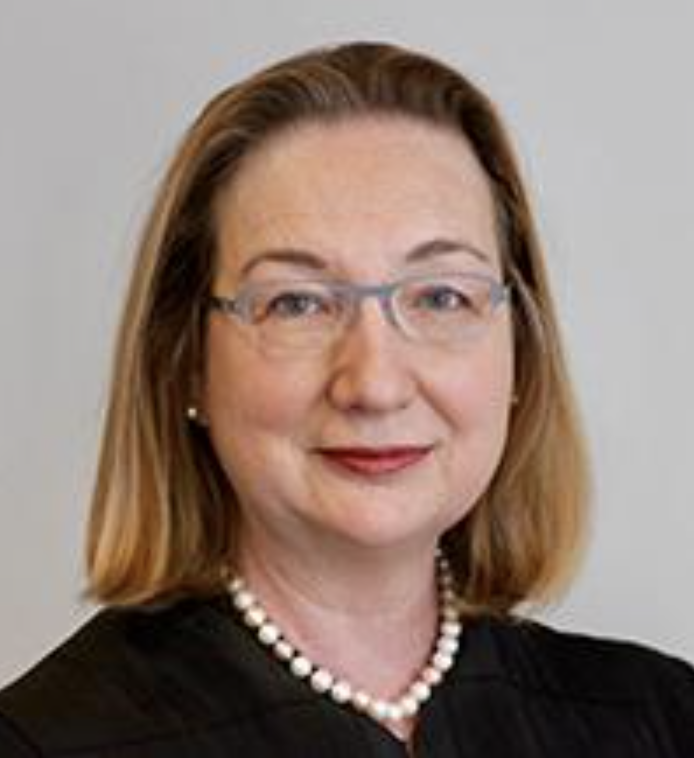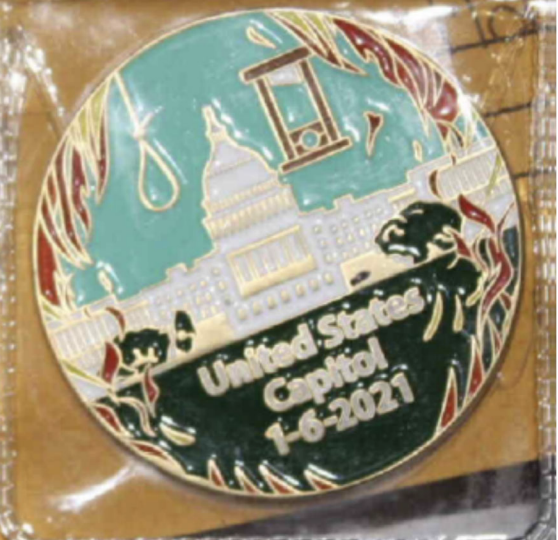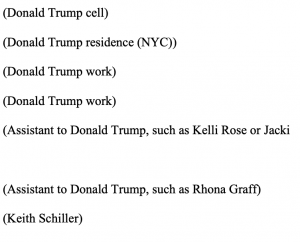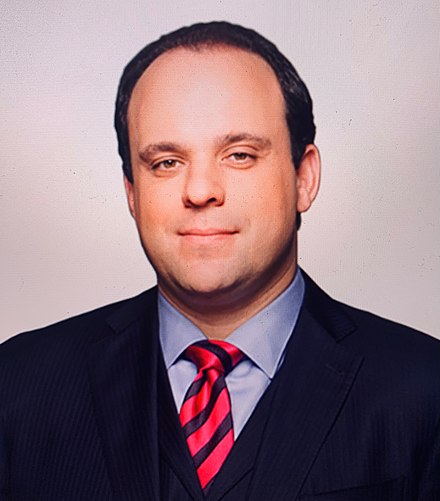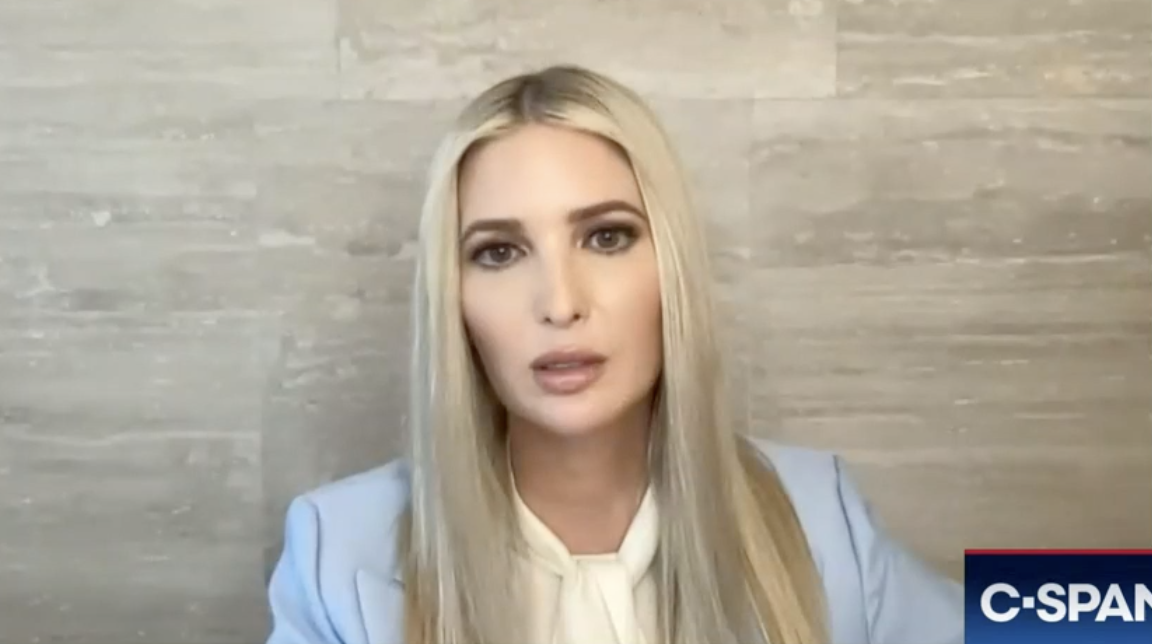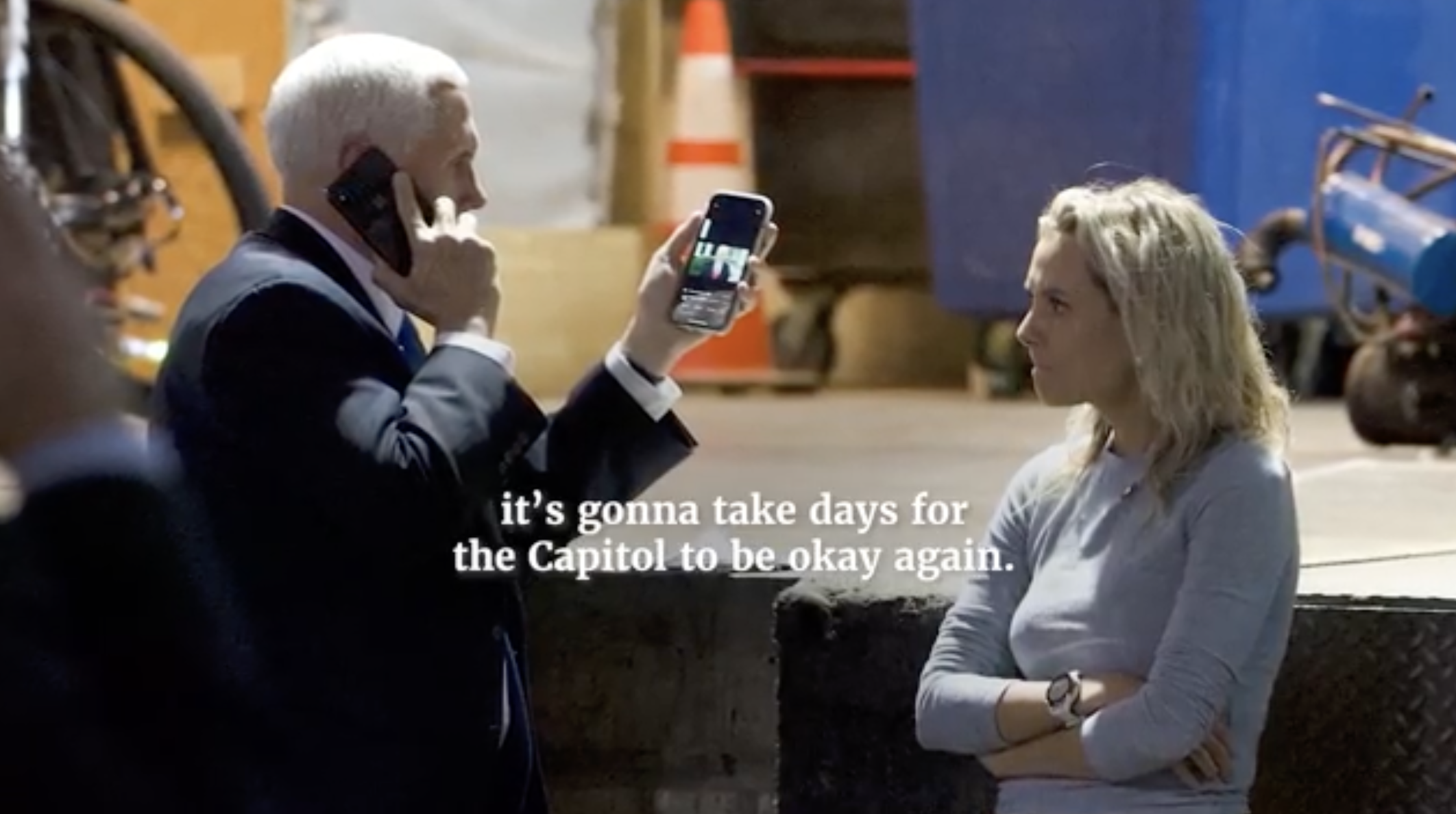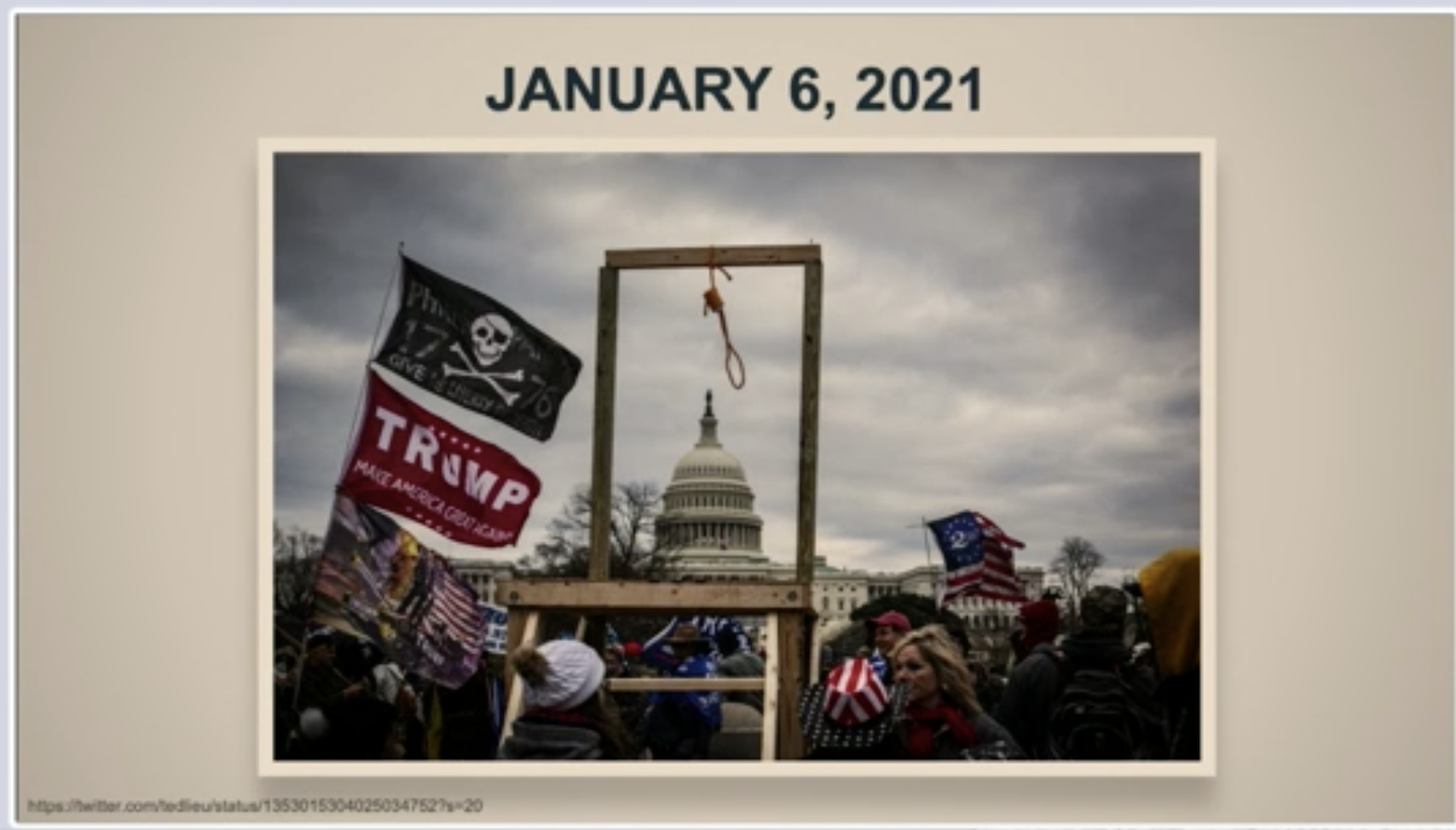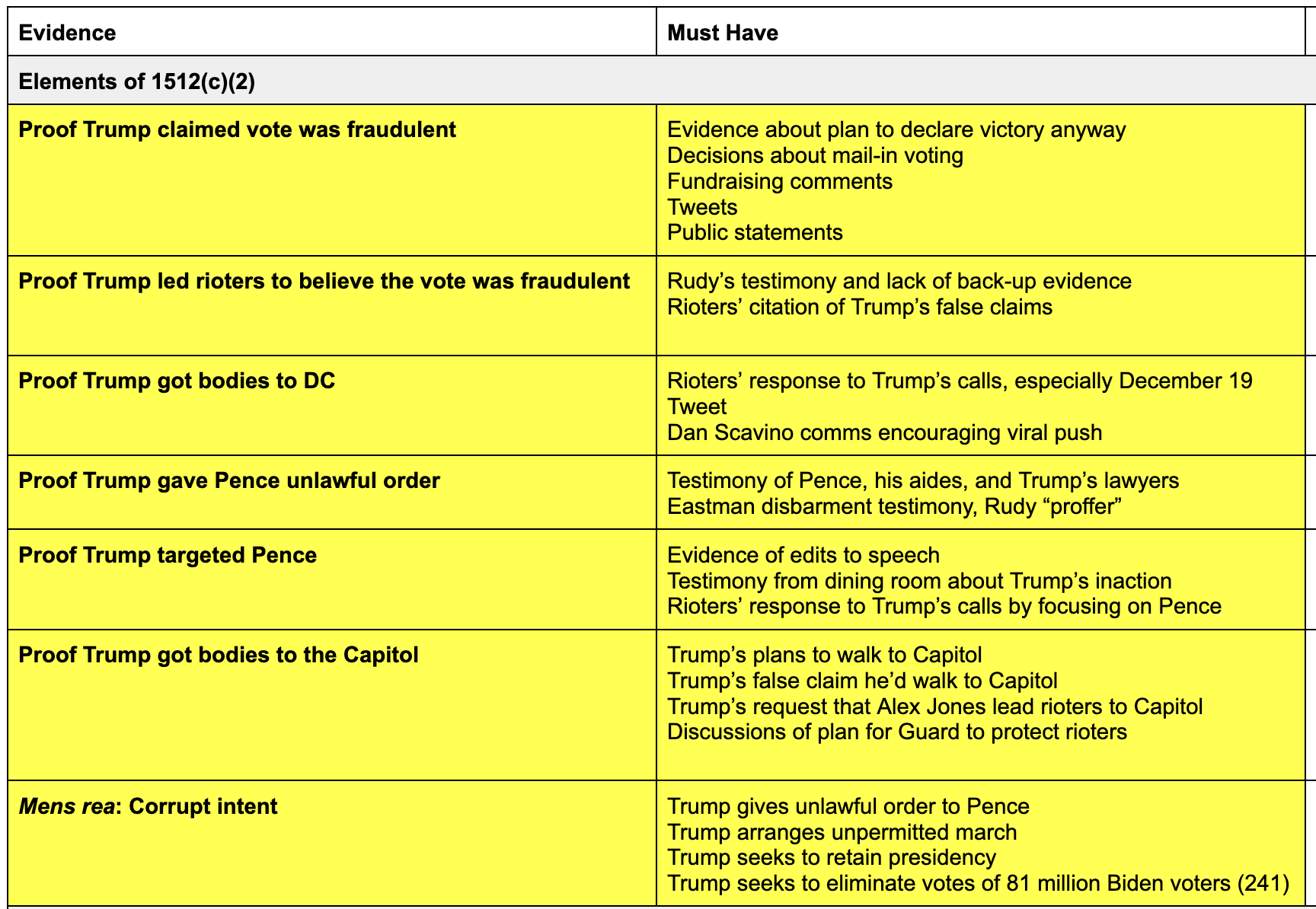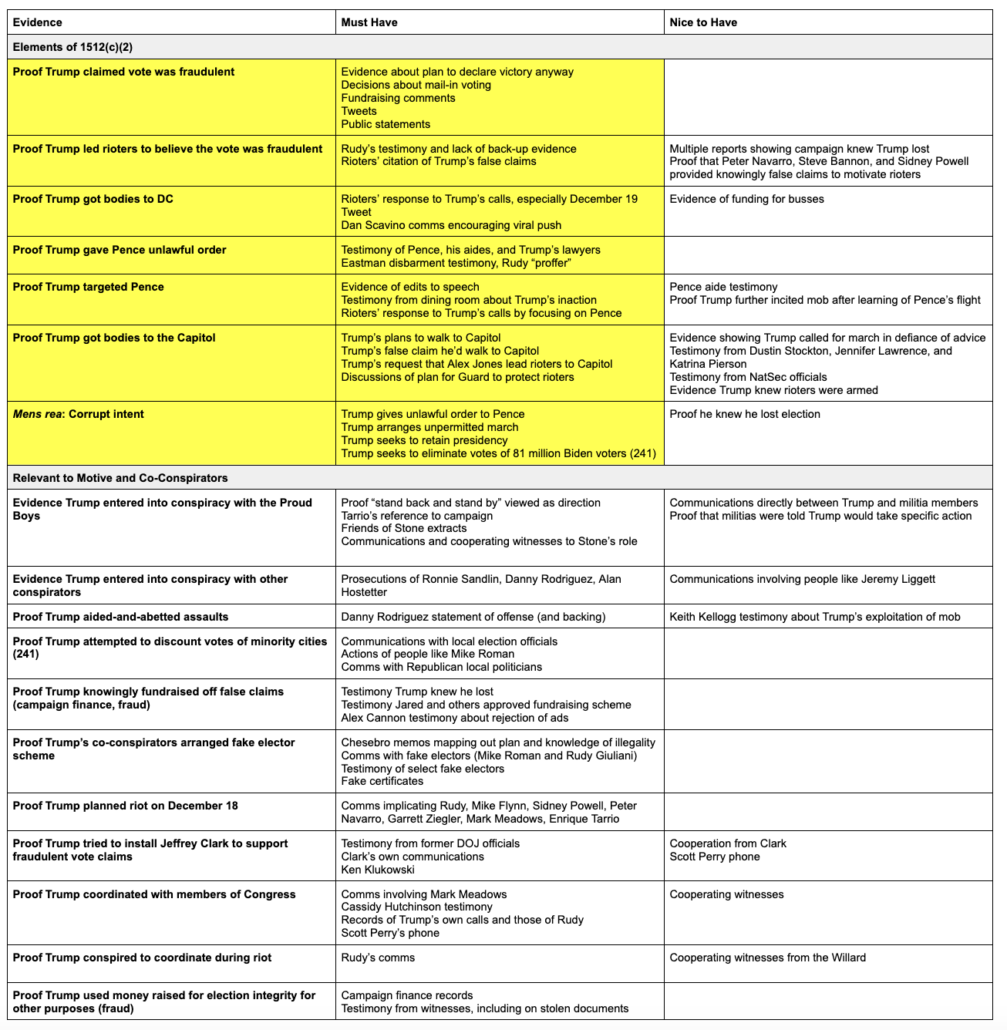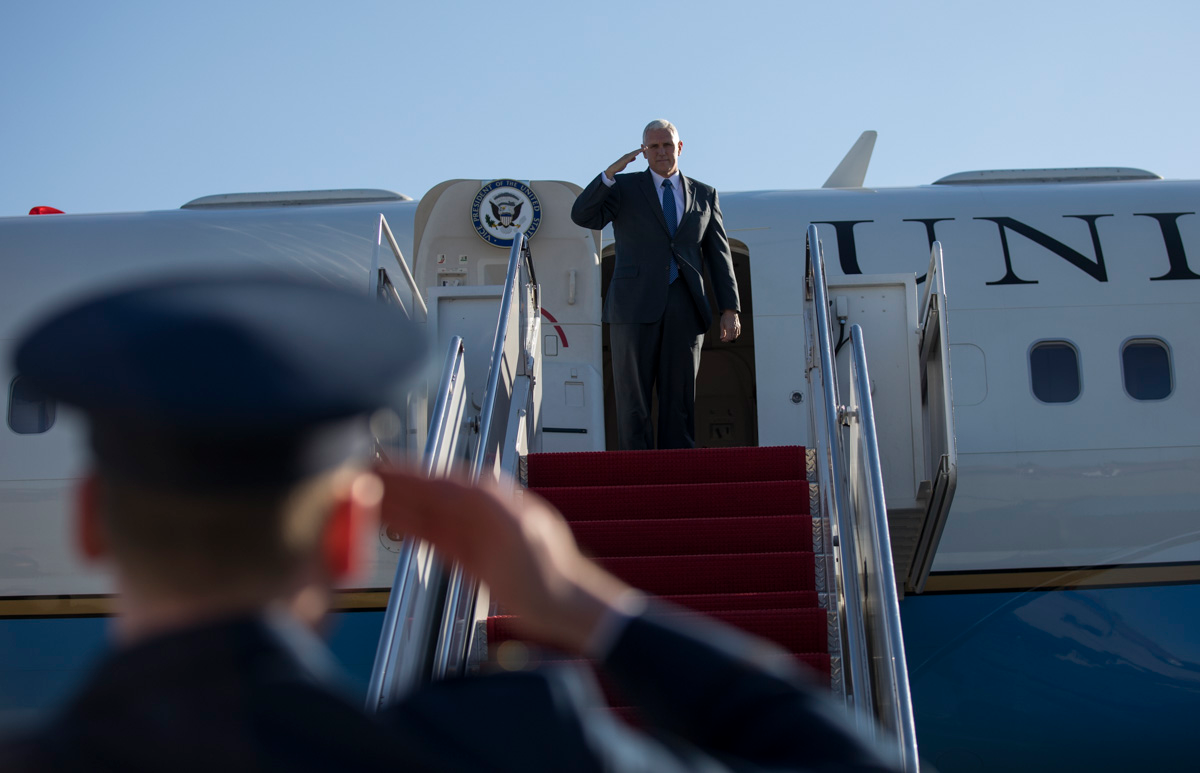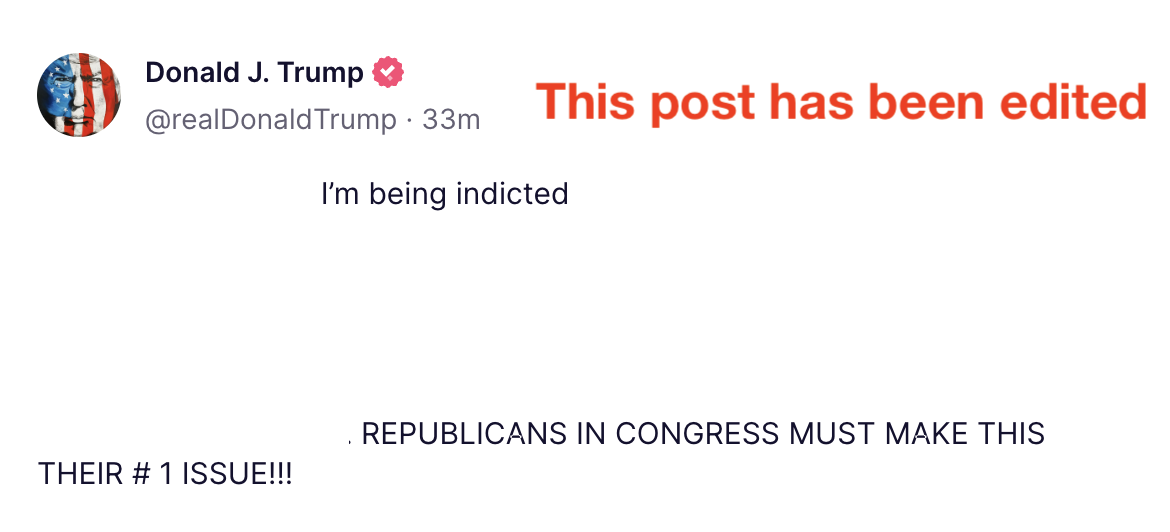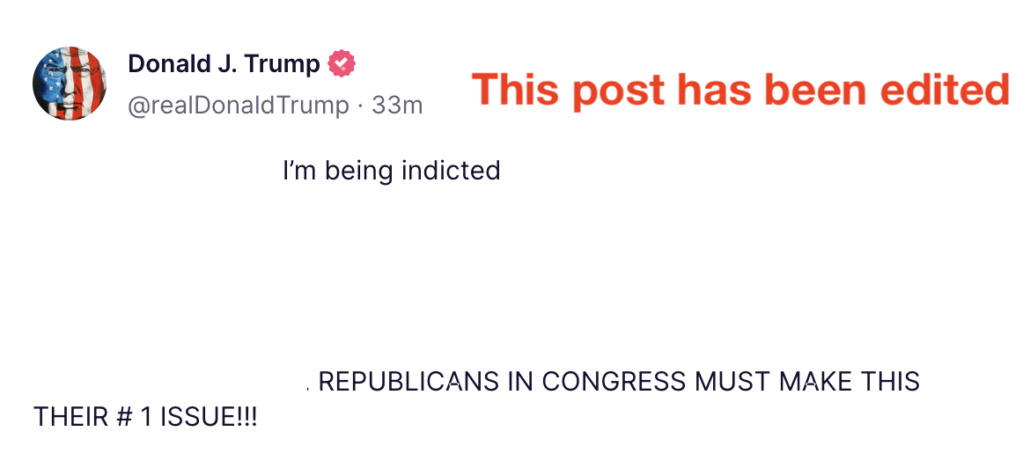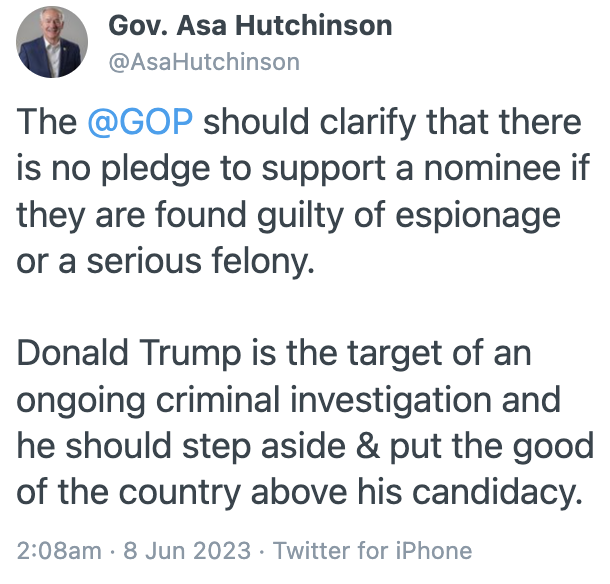Beryl Howell Scoffs That We Think We Know Anything about the Trump Investigations
On February 16, CNN published a story describing that there were eight sealed grand jury matters in the twin investigations into Trump. In addition to the not-yet filed Mike Pence challenge to his own testimony, it named seven other sealed proceedings:
- The crime-fraud ruling pertaining to Evan Corcoran
- DOJ’s bid to hold Trump in contempt for failing to turn over all stolen documents in his possession
- Trump’s Executive Privilege claim with Greg Jacob and Marc Short
- Trump’s Executive Privilege claim with the two Pats, Cipollone and Philbin
- Scott Perry’s Speech and Debate challenge to the warrant for his phone
- The privilege fight over Jeffrey Clark, John Eastman, Ken Klukowski, and one other person’s content
- The order compelling Kash Patel to testify
Just over a week later, on February 24, Xitter’s lawyers would include that story in package of media articles it claimed — in its reply brief to vacate the gag order — showed that DOJ didn’t need to keep the warrant for Trump’s Xitter account sealed any longer.
That story about how little we knew of sealed grand jury proceedings became part of yet another sealed grand jury proceeding in the investigation into Donald Trump.
The reply motion itself made a bunch of claims about how much was known about the investigation, with more links to news articles.
3 Mr. Trump may be unique in this regard for this investigative step. Because he was announced as a principal subject of investigation and because the public reporting has focused on investigative actions directed at him, he may have a unique level of knowledge about investigative actions regarding him—even relative to other investigations of him that were conducted with far less public awareness.
4 The news articles Twitter cited its initial motion are attached here as Exhibit A. The articles cited in this Reply are attached as Exhibit B.
5 Maggie Haberman & Michael S. Schmidt, Jared Kushner and Ivanka Trump Subpoenaed in Jan. 6 Investigation, N.Y. TIMES (Feb. 22, 2023), available at [link redacted]
6 Maggie Haberman & Glenn Thrush, Pence Gets Subpoena From Special Counsel in Jan. 6 Investigation, N.Y. TIMES (Feb. 9, 2023), available at [link redacted]
7 C. Ryan Barber & Sadie Gurman, Mark Meadows, Trump’s Last Chief of Staff, Subpoenaed by Grand Jury, WALL STREET JOURNAL (Feb. 15, 2023), available at [link redacted]
8 C. Ryan Barber & Alex Leary, Trump Lawyers Appeared Before Grand Jury as Part of Classified-Documents Probe, WALL STREET JOURNAL (Feb. 11, 2023), available at [link redacted]
9 Katelyn Polantz et al., Special counsel is locked in at least 8 secret court battles in Trump investigations, CNN (Feb. 16, 2023), available at [link redacted]
10 C. Ryan Barber & Alex Leary, Trump Lawyers Appeared Before Grand Jury as Part of Classified-Documents Probe, WALL STREET JOURNAL (Feb. 11, 2023).
11 Jim Small, GOP Arizona legislators, including leaders of the house and senate, subpoenaed to testify in special counsel probe of Trump, Arizona Mirror (Feb. 17, 2023), available at [link redacted]
That February 24 package was actually the second package of news articles Xitter cited or linked to support its argument that revealing the warrant wouldn’t help Trump because so much of the investigation had been publicly reported; it cited a bunch in the initial motion to vacate, too.
First, the Department of Justice’s criminal investigation into former President Trump and his potential role in the efforts to overturn the 2020 presidential election and the January 6, 2021 attack on the United States Capitol, has been public for several months prior to the issuance of this Warrant. Specifically, the news media has reported extensively that presidential advisors, including White House counsel and senior staff, have been subpoenaed to testify before a federal grand jury investigating those events. See e.g., Casey Gannon et al., Former Trump White House Counsel and His Deputy Testify to Jan. 6 Criminal Grand Jury, CNN (Dec. 2, 2022), available at [link redacted] First on CNN: Top Trump Advisor Stephen Miller Testifies to January 6 Federal Grand Jury, CNN (Nov. 29, 2022), available at [links redacted]; Bart Jansen, Justice Department Subpoenas Dozens of Trump Aides in Apparent Escalation of Investigation, According to Reports, USA Today (Sept. 12, 2022), available at [link redacted]; Kyle Cheney, Two Top Pence Aides Appear Before Jan. 6 Grand Jury, POLITICO (Jul. 25, 2022), available at [link redacted].
[snip]
It is also well known that, as part of its investigation, the Department of Justice is closely examining the private communications of people within the scope of its investigation, including the former president’s aides and allies. Indeed, the Department of Justice has obtained search warrants for electronic devices of numerous close associates of former President Trump. See e.g., Steve Benen, DOJ Seizes Team Trump Phones as Part of Intensifying Jan. 6 Probe, MSNBC (Sept. 13, 2022), available at [link redacted]; Ella Lee, Pennsylvania Rep. Scott Perry, a Trump Ally, Says FBI Agents Seized His Cellphone, USA TODAY (Aug. 10, 2022), available at [link redacted]; Scott Gleeson, MyPillow CEO, Trump Ally Mike Lindell Says FBI Issued Subpoena, Seized Phone at a Hardee ‘s, USA TODAY (Sept. 14, 2022), available at [link redacted]; Alan Feuer & Adam Goldman, Federal Agents Seized Phone of John Eastman, Key Figure in Jan. 6 Plan, N.Y. Times (Jun. 27, 2022), available at [link redacted]. The Federal Bureau of Investigation (“FBI”) has also executed a search warrant at the home of a Trump ally to seize electronic devices. See e.g. Alan Feuer at al., Federal Authorities Search Home of Trump Justice Dept. Official, N.Y. Times (Jun 23, 2022), available at [link redacted].
Then it included those articles as an appendix in its opposition to show cause to hold it in contempt.
Over and over again, Xitter argued that the media coverage of the investigation provided a thorough understanding of the steps taken so far in the investigation.
It was an argument that then-Chief Judge Beryl Howell, deep into presiding over her second and third investigations — that we know of! — into Donald Trump found wildly unpersuasive.
She and AUSA Gregory Bernstein discussed it at some length in the February 7 hearing on the warrant.
At first, she asked how much Xitter really knew so she could figure out whether Xitter had refused to respond to a warrant thinking that no one would protect Trump’s privileges — thinking that somehow Judge Howell, deep into presiding over her second and third investigation of Donald Trump, had ignored those sensitivities.
Howell: I need to be clear about what Twitter has seen of the warrant package. I don’t know how many of you at Twitter’s table have ever been prosecutors; but you know the warrant is a very thin little part — important part, critical part, it is a court order — a thin part of a warrant package. I am not clear from this record what Twitter has seen and what it hasn’t. It doesn’t know very much at all, although it thinks it does, about the government’s investigation; but it certainly doesn’t know, I don’t think, very much about the warrant that I signed and all of its parts. But I need to be clear about what it does and doesn’t know about that.
[snip]
THE COURT: ALL right. Now let’s turn to the warrant package. Okay.
So the warrant package consisted of an incredibly lengthy affidavit, the warrant itself. The warrant itself had Attachment A, property to be searched; it had Attachment B, particular things to be searched; and Attachment B had different parts.
Now, certainly, Twitter hasn’t seen the application part of the package; it hasn’t seen the affidavit part of the package. Is that right?
MR. BERNSTEIN: Yes, Your Honor.
THE COURT: That’s correct?
MR. BERNSTEIN: That’s correct, Your Honor.
THE COURT: Certainly, Twitter has seen the warrant and Attachment A; is that correct?
MR. BERNSTEIN: That’s correct, Your Honor.
THE COURT: And out of Attachment B, has Twitter seen any part other than Part 1?
MR. BERNSTEIN: No, Your Honor.
THE COURT: Okay. Well, that’s sort of what I thought, but I wanted to make sure.
So Twitter, as it sits here, has zero idea and zero affirmation about whatever filter protocol or procedure there is attached to this warrant in terms of processing any warrant returns; is that correct?
MR. BERNSTEIN: That’s correct, Your Honor.
THE COURT: And if they know, it’s not from the government.
MR. BERNSTEIN: I’m sorry. Can you repeat the question, Your Honor?
THE COURT: They wouldn’t know from the government.
MR. BERNSTEIN: They would not know from the government, Your Honor, that’s correct.
THE COURT: ALL right. So to the extent that Twitter is standing here, as I understand their position, trying to protect any privilege of the account user with this solution of providing prior notice to the account user, they are taking no account because they can’t — because they haven’t seen it and they don’t know anything about any filter protocol that might be attached to this warrant.
MR. BERNSTEIN: That’s correct, Your Honor. They do not know about any Filter protocol that could or could not be attached to the warrant.
THE COURT: Got it. Okay.
I just want to make it clear, when providers step in here and take up my time on what should be a simple processing of a warrant, exactly how much in the dark they are. Okay.
But then she returned to the question — and the first of Xitter’s two big packets of articles on the investigation — when trying to ascertain whether Xitter had any basis to claim that revealing the warrant wouldn’t alter the balance of the public knowledge on the investigation.
THE COURT: Okay. So Twitter, in its opposition, had, like, I don’t know, I counted like pages of an exhibit of all these press reports about the special counsel investigation; I didn’t look at it in detail.
But, in sum, Twitter’s argument is: Hey, the government’s interest in maintaining the NDO isn’t compelling because look at all this press. Lots of people know about this investigation going on. The Attorney General has an order on the DOJ website saying: I have appointed the special counsel to look at the following issues.
Twitter goes on to say that the press has been doing its job, thankfully. And so, as a consequence, we all know that, you know, the government, in aggressively pursuing this investigation, has been looking at the communications of a number of people.
So it sums up by saying: It strains credulity to believe that the incremental disclosures of this warrant could somehow alter the current balance of public knowledge in any meaningful way so as to cause harm to the investigation.
So just like Twitter doesn’t know much about the warrant here at all, and has only seen a small sliver of the entire warrant package, do you think that it strains credulity to believe the incremental disclosure of this order would somehow alter the current balance of public knowledge in any meaningful way?
MR. BERNSTEIN: Absolutely not, Your Honor.
There is an incredible difference between the public knowing about the existence of the investigation and the account holder in this case knowing about a concrete, investigative step that the government has taken.
And, again, I have to be careful about what I say in this setting because I don’t want to disclose information that’s covered by 6(e) or that otherwise would compromise the investigation. With that said, Your Honor, I think when Your Honor gets our ex parte filing with respect to the NDO, I think Your Honor will wholeheartedly reject the assertion that it strains credulity to think that there could be serious adverse consequences from the President finding out about this search warrant.
Howell and Bernstein returned to the question a short time later, when Bernstein said, “they don’t know anything” but where making “confident factual assertions without knowing the actual facts of the investigation.”
Howell: So do you want to respond to that? — to Twitter’s comment that there is no reason to believe notification would suddenly cause Trump or potential confederates to destroy evidence, intimidate witnesses, or to flee prosecution, or are you waiting on that for an ex parte submission?
MR. BERNSTEIN: We are waiting. But I can give Your Honor two responses in the meantime.
First, they don’t know anything. I mean, they know some stuff. They know what they have read in the newspapers. But they’re making these confident factual assertions without knowing the actual facts of the investigation.
Number two, they have cited a number of news articles. They seem to have a robust understanding of what is in the public record. They seem to be ignoring the fact that there is an entirely separate public investigation into the former President for doing just that, for taking obstructive efforts with respect to NARA’s request to retrieve classified documents, and then the government — the grand jury’s request to subpoena classified documents from the former President, and the steps that he took to obstruct those efforts. So there will be considerably more detail about the basis for the NDO when we brief this issue.
For now, though, the assertion that they’re making, one, is not based on any factual foundation that they could possibly be aware of; and then, second, to the extent that they are able to ascertain details from the public record, they seem to be ignoring those details.
Xitter had no factual foundation to make the confident assertions about the investigation, an AUSA who had been involved in crafting the warrant explained.
DOJ repeated that argument in its opposition to Xitter’s motion to vacate the order of contempt.
Twitter offers (Twitter’s Mem. 8–14) two unpersuasive arguments to the contrary. First, Twitter contends (id. at 8–12) that because some aspects of the investigation are publicly known, it “strains credulity to believe” that providing the Warrant to the former president will “alter the current balance of public knowledge in any meaningful way” because such a disclosure would be merely “incremental.” Id. at 11. That contention is flawed in several respects. Although the investigation’s existence is no longer secret, it does not follow that the specific ongoing investigative steps the Government is pursuing are therefore publicly known. Many of the media accounts that Twitter cites (id. at 8–10) attempt to fill in gaps based on discrete pieces of information or courthouse sightings of witnesses.4 Whatever the effect of those accounts on the “current balance of public knowledge,” id. at 11, they provide nowhere close to the detail supplied in the Warrant. Providing the Warrant to the former president at this point in the investigation would thus far exceed some mere “incremental” step in informing the former president, as described in the ex parte submission.
4 The same is true of the 80 pages of articles and other documents that Twitter submitted as an exhibit to its opposition to the Government’s Motion to Show Cause. See Twitter’s Opposition to Government’s Motion for an Order to Show Cause, Exhibit B (filed Feb. 6, 2023).
At the same time as we were having very public, ugly battles about what TV lawyers were sure they knew about the investigation, Beryl Howell and Gregory Bernstein were scoffing at the idea that anyone would have a thorough understanding of the investigation based off what witnesses shared with the press or what journalists spied from staking out Prettyman Courthouse.
While Politico sussed out that WilmerHale was involved in a high level fight with Jack Smith’s team when the lawyers came back for an appellate hearing in May, no one knew way back in early February that the pitched battle was already, at that point, several weeks in progress.
Neither Politico nor CNN — the two best outlets for staking out the courthouse — knew their own work had been cited as proof that the public knew all there was to know about the investigation, only to have Beryl Howell scoff at the idea.
No one knew that Jack Smith had obtained Trump’s Xitter account. And even after seeing 500 pages from the fight over that warrant, no one yet knows precisely what they were looking for.
I take that back.
After Judge Tanya Chutkan crafted a protective order last week, Trump got his first batch of discovery. And here’s what he described learning about the investigation, in his bid to delay the January 6 trial until April 2026.
It, among other things, interviewed and subpoenaed hundreds of witnesses, executed over 40 search warrants, and compiled information from countless individual sources. The government included some, but not all, of these materials in a massive, 8.5-terabyte initial production, totaling over 11.5 million pages, together with native files, recordings, and other electronic data not amenable to pagination. [my emphasis]
We’ve spent the last two weeks entranced by a single warrant, making grand conclusions about what Xitter — which also knew nothing — was emphasizing to win a legal battle.
We know of perhaps ten other warrants, if Jack Smith is sharing the warrants for Trump’s co-conspirators and close aides (though he doesn’t have a Fourth Amendment interest in any of those warrants).
- Rudy’s devices (likely a warrant served on the FBI in NY)
- Ken Klukowski’s Google account
- Jeffrey Clark’s Outlook account
- Jeffrey Clark’s Google account
- Jeffrey Clark’s phone
- The fourth account from an as-yet unidentified non-lawyer
- John Eastman’s Chapman University emails
- John Eastman’s phone
- Boris Epshteyn’s phone
- Mike Roman’s phone
We know of subpoenas targeting Sidney Powell. We know nothing — literally nothing — about the investigation targeting Ken Cheseboro, one of Trump’s unindicted co-conspirators (except that investigators would have been very interested to learn why he was tailing Alex Jones during the attack on the Capitol, filming him on his phone).
We know of subpoenas obtaining information from NARA. We know of other phones that were seized — like Scott Perry’s and some of the key fake electors and Owen Shroyer — but those present sensitivities that make it less likely they would get shared with Trump, that they would be among the 40 warrants he knows about but we don’t.
We can assume that DOJ obtained warrants for every little last shred of cloud content available from Trump and his co-conspirators, long before they would have started seizing phones.
We can be sure that Trump’s Xitter file would be the last to be seized, not the first. The filings themselves cite how Trump and his associates use Xitter, which DOJ would have learned by seizing those associates’ Xitter accounts first.
Donald Trump is looking at forty warrants and we only know of one with his name on it, and even there we have no idea what DOJ was really after.
I’d say that Beryl Howell was right to scoff at Xitter’s lawyers, at us, for our confident statements about the investigation.

